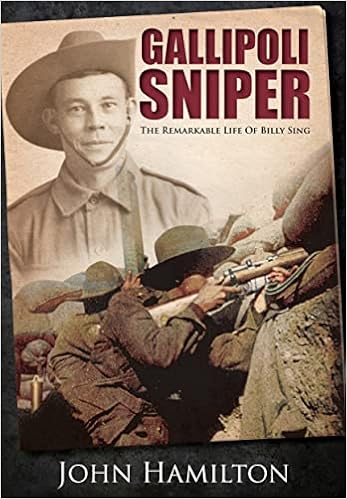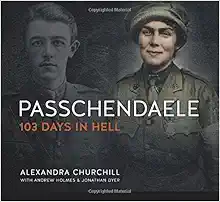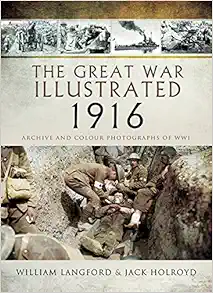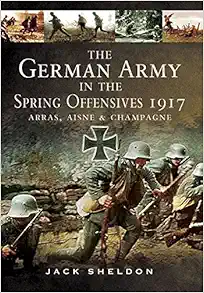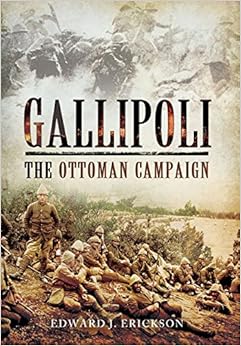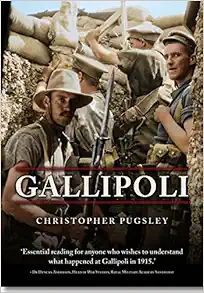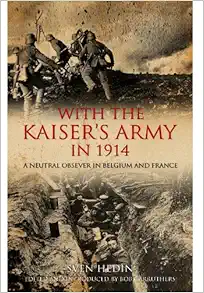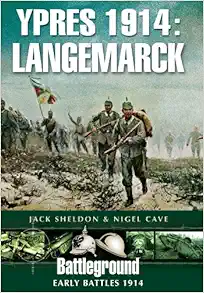Remembering South Africa’s participation in World War I: The battle of Delville Wood and the sinking of SS Mendi
By Herman Warden
Faculty of Military Science, Stellenbosch University (Military Academy).
Abstract
South Africa entered World War I as a divided society; which results in the commemoration becoming more complex than in a unified society. During the Apartheid era, the battle of Delville Wood was celebrated as South Africa’s ‘finest hour’ in World War I. However, in the minds of black South Africans commemorating South African participation in World War I the sinking of the SS Mendi stands out. In post-Apartheid South Africa, the SS Mendi seems to have surpassed the battle of Delville Wood as South Africa’s most celebrated sacrifice in World War I. The aim of this paper is to determine how South Africans commemorate their participation in World War I, with specific reference to the battle of Delville Wood and the sinking of SS Mendi. A brief overview of the battle of Delville Wood and the sinking of the SS Mendi will be given. Thereafter, it will be determined how the battle of Delville Wood and the sinking of the SS Mendi were commemorated historically. Lastly, the paper will explore how both these events are presently commemorated in South Africa.
A brief overview of Delville Wood and the sinking of the SS Mendi
The Union of South Africa was established in 1910 and was to remain a dominion of the British Empire. Tensions still existed between the English and the Afrikaans speaking South Africans, as they had recently engaged each other during the South African War 1889-1902 .[1] A Boer rebellion consequentially followed in 1914 after South Africa joined World War I on the side of Great Britain.[2] As a British Dominion, South Africa became involved in the War with its first task of taking over German South West Africa (GSWA) and aiding in the victory of the Entente against the Central Powers.
On August 1915 South African troops departed for Britain where they had to build up their strength before going to France, to take part in the upcoming Allied offensives. The battle of Delville Wood formed part of one such allied offensive namely the battle of the Somme. The battle of Delville Wood started on 14 July 1916 and ended a month later.[3] The whole aim of the Battle of the Somme and more especially Delville Wood was to affect a breakthrough in the German Lines. It was believed that by capturing the German second and third line of trenches the task of breaking through the German lines would be much easier. Thereby, making an Entente victory more easily obtainable.[4]
The South African Infantry forces became involved in the second phase of the Somme offensive, having recently seen combat in GSWA and Egypt. The South African Forces in the Somme offensive consisted of the First South African Infantry Brigade with its four battalions. The First South African Infantry Brigade (1SAI) was commanded by Brig General Lukin, but was subordinated to the command of Sir Henry Rawlinson of the British 4th Army, which was tasked to breakthrough the German lines by any means necessary .[5] The First South African Infantry Brigade were tasked to secure Longueval to prevent the German Forces from counter attacking after the trenches has been taken. Little resistance was met in Longueval, whilst the SA brigade encountered stiff resistance in Delville Wood.
The Commander of the First South African Infantry Brigade General Lukin was tasked, to take and hold the wood at all costs .[6] 1 SAI’s attack on Delville Wood started on 15 July 1916. At this time, the SAI brigade had only secured the South Eastern corner of the Wood .[7] The Germans launched a counter attack against the South African positions in Longueval and Delville Wood, which lasted for six days, and five nights. The South Africans were only relieved on 20 July 1916, with very high losses. South Africa’s casualty rating in comparison to its troop contribution to other commonwealth armies was high, 265,775 volunteers answered the call.[8] The cost of holding Delville Wood was very high for the SAI brigade, as it lost over 2,000 out of a total of 3,032 men in the course of less than an entire week, but the German attacks was repelled and what remained of the Wood was held.[9]
In 1917, there occurred yet another tragedy which cost the lives of many soldiers on their way to France that is also very memorable in South African Military History. A ship transporting soldiers of the South African Native Labour Contingent (SANLC), the SS Mendi sank on 21 February 1917, off the Coast of the Isle of Wright as a result of a collision with the SS Darro.[10] The SANLC had been established so that some of the whites could be freed for action elsewhere. The SANLC was utilised in a logistical capacity, and were considered non-combatants, as they were mainly a labour force .[11] However, the Chiefs of their tribes made numerous requests to the SA Natives Affairs Office that volunteers be armed. The request for arming the soldiers of the SANLC was declined numerous times in fear of a black uprising and the post war period’s probable requests for equality .[12] Amongst the SANLC, were educated men, which mainly became the NCOs or Officers of the Unit, as they could communicate to their own people. The command cadre of the SANLC was all Europeans whilst the rest was all-African. The SS Mendi was one of three troopships that embarked for France from South Africa .[13]
On the 20 February 1917, the SS Mendi departed from Plymouth off the British Coast for Le Havre France .[14] The following morning of 21 February 1917, thick fog was encountered and some of the SANLC was posted as extra lookouts as a preventative measure against collisions and German U-Boats. Thus, measures by the SS Mendi’s Captain had been taken to ensure the safety of the ship and its crew.[15] The SS Darro’s Captain on the other hand, did not do the same, as he ran the ship at full speed hoping to make up for lost time. The SS Darro eventually collided with the SS Mendi’s starboard rupturing the hull and the deck where the crew of the SANLC was housed.[16]
The SS Mendi’s lookouts identified the SS Darro shortly before it collided. Upon impact, some of the SANLC men died instantly as their sleeping quarters were crushed by the other vessel’s bow .[17] The SS Darro continued on its voyage and shortly thereafter came to a complete stop. It did not send any assistance to the sinking Mendi as was supposed to happen at sea. Its Captain only started to take action when the Mendi’s life rafts started to approach it.[18] As the Darro struck the Mendi, the telegraph operator was killed and resulting in the breakdown of radio communications which made it impossible to call for assistance from nearby allied ships.[19] Of the 872 Soldiers that were aboard only 230 survived. According to Gleeson[20] , the ship developed a heavy list to starboard and sank within approximately 20 minutes after the collision. The Cape Times of 10 March 1917 had the published the official address made by General Louis Botha in Parliament. In this report, General Botha had reported that the SS Mendi had sank within 25 minutes of being struck by the SS Darro.[21]
At the subsequent court of inquiry the Captain of the SS Darro was found guilty of not abiding by the stipulated regulations. As such, his license was suspended for 12 Months as a penalty for negligence and not assisting the SS Mendi’s passengers thereby not abiding by Maritime Regulations .[22] Both Delville Wood and the sinking SS Mendi are commemorated by South Africans, but these events are commemorated for different reasons by different segments of South African society.
Delville wood and SS Mendi commemoration after World War I
Whilst much has been written of the battle of Delville Wood in the post war period, the sinking of the SS Mendi did not enjoy the same exposure. In 1920, Sir Percy Fitzpatrick purchased Delville Wood and presented it as a gift to the Union of South Africa. A plague was revealed in 1924 in Adderley Street Cape Town, which listed the names of all whom lost their lives at the battle of Delville Wood .[23] Another plague was also unveiled two years later in October at Delville Wood itself by Gen Louis Botha’s wife, whilst the South African Prime Minister J.B.M Hertzog addressed those present .[24]
According to Nasson [25] commemorating those lost at Delville Wood began in 1917 when passing soldiers would come and pay their respects. Delville Wood Day was implemented in 1919, which entailed memorial services at churches, military parades and street processions amongst other ways of commemorating their sacrifice.[26] It has to be noted that South Africa after the battle occurred, was still split amongst those with loyalties to the British Empire and those with loyalties to the Afrikaner Nationalists. It was thus, not surprising when the Government saw Delville Wood as South Africa’s most Glorious day of achievement as General Louis Botha was loyal to the British Empire .[27] By marking the battle of Delville Wood as the most glorious day, and seeing it as a battle in which Englishmen and Afrikaner fought side by side against the Germans. It was hoped internal tensions between them would lessen in South Africa.
Concerns were voiced against the commemoration of Delville Wood Day as it was considered by a certain segment of South Africans to reinforce capitalism at the peril of then South African Government . In addition, in 1917-18 it was seen as unpatriotic not to commemorate the sacrifices of those fallen heroes. The commemoration of Delville Wood was only celebrated by the White members of the Union of South Africa, whilst they virtually ignored the 1917 SS Mendi tragedy .[29] A Midday Pause was suggested by Sir Percy Fitzpatrick. The ideal of the Midday pause would be to commemorate all the soldiers that had fallen during World War I. The Midday Pause commenced on 14 May 1918.[30] However, it did not last long as it was abandoned altogether in December 1918. The inspiration of the Midday pause came from a funeral service that Percy Fitzpatrick had attended in the early stages of World War I. When the Midday pause was abandoned, the Armistice Day celebrations started after the peace treaty had been signed that marked the end of World War I.[31]
On the Delville Wood Day Service 1933, Reverend Canon Sharman stated that:
| “If these Commemoration Services are to serve any good purpose and not to be mere expressions of sentiment, we ought to be able to take away with us some message which can have some practical influence on our lives”. [32] |
In addition to this, the Reverend asked three questions:
| “Can we remember? Can we see? Have we any imagination?”[33] |
The importance of the day, as the reverend stated is that we remember the sacrifices made during World War I. We must learn from them the bravery to preserve peace and if threatened to bear arms to protect our rights of freedom and liberty. Those that were part of the war will always have their memories and memories are powerful tools, if used in the education of others to prevent yet again these sacrifices of these men to not have been in vain. We must not let those that paid the selfless sacrifices, be forgotten, as they may now be dead or maimed because of selfless sacrifices in the performance of their duties. The Battle of Delville Wood, is perhaps not the only momentous battle South African Forces has ever been engaged in, but many South African lives were lost and World War I was hoped to be a war that would end all wars. The men of Delville Wood died in protecting liberty and the rest of humankind by making the ultimate sacrifice. Thus, Dellville Wood Day must not be looked upon as a day of sadness or days of grief, but a day of inspiration, hope and bravery .[34]
Memorials themselves represent a trinity between the living, the dead and the location at which it is situated. This allows the living to get the feeling of what those that had fallen had gone through, as well as a means of perpetuating the memories of those that had selflessly sacrificed themselves in order for ideals and principles. This has been by the three questions that the Reverend had asked in 1934. Foster accordingly argues:
| “The prime purpose of memorials is to comfort the living, and to serve as durable cultural objects that stand for ideals and events considered significant by a given cultural group” .[35] |
This can be seen by the construction of a memorial at Delville Wood itself and the later subsequent construction of a memorial museum at the same sight in 1986. Delville wood is perhaps not the only battle in which South African Forces suffered heavy casualties, but at the time, it was the battle that had captured the attention of most South Africans .[36] By constructing numerous war memorials, the Dominion forces were able to construct new identities as the Australians, Canadians and the New Zealand’s did at their various battles memorial sights scattered along the Western Front. As the histories of the Dominion forces was constructed, although relatively a new history, a change in their mood could be identified. The War Memorials of the Dominions was significantly different from that of the British Empire itself. As the Dominions had proved their worth and thought it necessary to commemorate each of their defining battles of World War I. Under the Common Wealth Graves Commission (CWGC), the memorials were erected at sights that had great significance. As the CWGC erected these memorials, they chose the locations at which it would great as vision for those of the living how it might have been during the battles. Delville Wood War Memorial clearly illustrates this, as the wood was left in its original save a few trees that was replanted in the 1920’s for the construction of the memorial by Sir Herbert Baker .[37]
Numerous clubs has been established after the war to assist the war veterans and their families, amongst which was the Memorable Order of the Tin Hats (MOTHS), the British Empire South African Legion (Present SA Legion) and the Mendi Memorial Club. Norman Clothier in his book Black Valour states:
| “The comradeship of the men in wartime led to attempts to form clubs, and to the holding of memorial services on 21 February each year”.[38] |
Bennett Ncwana started the Mendi Memorial Club in 1920. The commemoration of Mendi Day was considered to take on a national basis, in which all of those tribes of the SANLC that had sent men could commemorate their bravery and sacrifice .[39] In 1931, a committee had been established for a scholarship fund entitled the Mendi Memorial Scholarship fund. It was two years prior to this that Reverend Robert Mashaba brought up a motion, that the 21st February of each year must be observed as Mendi Day in the African Ministers Association .[40]
These clubs also provided the foundation of further commemoration after the war, as well as spreading the words of these men’s sacrifices. The Delville Wood Memorial club, Mendi Memorial Club, the SA Legion and the MOTHS were all-instrumental in the perpetuation of those that had fallen during the World War I and afterwards memories.
Formal recognition of the sacrifices of the SANLC did not take place, nor was it recorded (accurately) in the Official History of the Union of South Africa and the Great War 1914-1918. In terms of the SS Mendi no mention is made of the SS Mendi, as a result it only states that 29 members of the SANLC [41] passed away in the execution of their duties, which seems to be inaccurate in comparison to that of the Common Wealth Graves Commissions register. It does however; recognise the deaths of 3,142 Natives listed under Non-Europeans .[42] The reason why the names were not published was that there existed a fear of the effect of this death toll would have on the recruitment drive of the Natives.
The Coloured soldiers of the war at least received a plaque in the commemoration of their sacrifices in the battle of Square Hill, which was unveiled in 1920 by General Lukin himself .[43]
No official plaques had been erected for the sacrifices of the SANLC during World War I and more especially the SS Mendi .[44] General Louis Botha did however ask for a moment of silence on 9 March 1917, in Parliament after all the information regarding this tragedy had been compiled accurately .[45]
The families or those lost at sea were to be informed of the tragedy and that the government will assist those where possible.[46] A fear did however exist for what the tragedy can do to the recruitment drive. In addition, Louis Botha, thought that the public would think that the South African government are trying to hide the tragedy from the public eye. Eventually two weeks after the tragedy they were duly informed. The extent of informing the as well as compensating them is doubtful if it ever really happened. The soldiers of the SANLC that had distinguished themselves in the execution of their duties did not receive any medals, whilst their counterparts in the other dominions had received theirs. In 1928, the British Empire Service League (present SA Legion), requested that the government of Britain does something of the matter. It was however to no avail.[47] According to the Bantu World of 18 February 1939, the Africans that had been involved in World War I still felt unfairly treated for their sacrifices, poorly compensated and unfairly rewarded. As the other dominion forces natives had received medals, whilst the South African Government of the day did not award them with medals.[48]
The 1930’s-40 saw the emerging importance of Afrikaner Nationalism, as well as that of African (Black) Nationalism. This would invariably have an impact on how Delville Wood and the SS Mendi would be commemorated, as social context is influenced by numerous factors such as politics and economics.
The Delville Wood and the Mendi day commemorations were established in memory of those of World War I that had sacrificed their lives for the greater cause of freedom. With the war at an end, the various groups in South Africa started to assert their ethical identities more readily. The upsurge of nationalism, Afrikaner and African alike took on the form of erecting memorials plaques in the case of the Afrikaners in remembrance of Delville Wood and in the case of the Africans plagues revealing the names of those that were lost accurately only arrived relatively late. South Africa was still in a state of flux, as it still had to establish a South African Identity. With the great depression during 1919-1924, some of the political factions started to become more radical in its means, particularly in the case of the Afrikaners.[49]
Two groups in South Africa were particularly important in the commemoration of the battle of Delville Wood. Firstly, the Colonial Nationalists wanted to ascertain the imagery of Afrikaner and Briton standing together by the construction of the arch which marked the entrance to the memorial. As such, they hoped to bridge the gap between the empire and the Afrikaner that had recently come towards an end at the end of the South African War. Thus, the memorial for the Colonial Nationalists was to abridge and show forgive fullness for the past wrongs. Secondly, the Afrikaner Nationalists wanted the memorial to depict the Afrikaner identity that is as capable a force as the Empire itself. They hoped that one day they would become independent and be rid of the empires influence in South Africa itself. As the Politics of the post war period emerged and started to see the mark of a change in South Africa, the Colonial Nationalists under Smuts, placed emphasis on erecting the memorial before the Afrikaner Nationalists under J.B.M. Hertzog would take over .[50]
The Delville Wood memorial erected at the Battle site itself in France, made it difficult for the normal South African to take a pilgrimage to the memorial sight, more especially during the great depression. Thus, the Colonial Nationalist government, under smuts, saw it necessary to bring the battle of Delville Wood to the home front. This was done by erecting numerous plaques depicting the sacrifices of the South Africans at the battle to the common South African. The Midday pause was amongst the numerous actions taken to make the battle better known, as well as to bring the two segments of South African together. It did however not make acknowledgement of the African forces that were engaged in the war as well as the Official History of the Union of South Africa in the Great War illustrated.[51]
The Afrikaner Nationalists aimed at gaining independence from the British crown .[52] Thus, the commemoration of Delville Wood and the Sinking of the SS Mendi took on a nationalistic character. For the Afrikaner it proved their worth in being able to fight and win a war, whilst the Africans saw the SS Mendi as a rally point for bravery and the governmental ignorance of the tragedy ever occurring. It became a rally point exactly because of the oppression against them, although they had done their fair share in the war.
Numerous newspapers had been established as means of spreading the words of Nationalism as well as protest against the South African Government. Amongst which was the newspaper Bantu World, which had come into existence during the 1930’s and played an interesting role during World War II as it provided a means by which the African Nationalist could communicate with one another as well as convert others to join in their cause .[53] The 1930’s saw the upsurge of protests against the Delville Wood celebrations. As during the late 1940’s The Delville Wood Memorial would serve as a rally point for Afrikaner Nationalism as it still showed that South Africa is just as civilised as the West .[54]
During the 1941 Mendi Memorial Celebration, Dr Xuma stated that the African although now still being discriminated against by the South African Government, sacrificed their lives for self-determination, preservation of the state, and that freedom may be preserved from the Central Powers. South Africa cannot prosper as long as there is racial discrimination, which divides the country; fighting the war is not just for winning it is for the preservation and the enhancement of social justice.
During the early 70’s the SA Legion, attempted to assist in the attainment of funds for the Mendi Memorial Scholarship Fund. As during the 1950’s the funds had been exhausted as too much money had been allocated to improve the local conditions .[55]
During the course of 1986 president P.W. Botha saw under increased international pressure, the need to recognise the efforts by the non-whites in the Participation of both World War I and II. He unveiled a memorial plague revealing the names of those of the SS Mendi that had lost their lives when the Delville Wood Memorial Museum was inaugurated the same year. The opening of the museum saw a memorial service for those that paid the ultimate sacrifice in service of South Africa. Numerous visitors had been received from the Bantustan states, which had come to mark the historical moment in South African Military History. At that stage in the 1980’s, the Memorial Museum was to serve as a reminder of the sacrifices made by the soldiers that lost their lives in Delville Wood as well as the SS Mendi.
In 1990, the Wreckage of the SS Mendi was found raided by treasure hunters, which had taken many mementos. The South African Government had applied by the Common Wealth Graves Commission (CWGC) to have the site proclaimed as a South African National Heritage Site. In the Cape Argus of 21 July 1991, Jeremy Brooks states that the loss of the men of the SANLC onboard the SS Mendi has gone unrecorded in school history books .[56]
In the Weekly mail of 19 to 25 February 1993, it states that:
| “Why this desire by the SANDF to be associated with an event that, more than anything, has signified the forgotten status of South Africa’s black servicemen?” [57] |
He continues:
| “From the beginning, the tragedy of the Mendi was underplayed by the government. The prime minister, General Louis Botha, delayed the official announcement for more than two weeks, fearing that it would hinder the recruitment drive” .[58] |
The original correspondence between Louis Botha and the British Colonial Office in London, showed a concern about the recruitment drive as well as a delay in having accurate information for making it public as of yet. Nonetheless, it was made public, with perhaps a delay of a week or two in informing the families and the next of kin of those members of the SANLC and the crew of the SS Mendi that was lost at sea in 21 February 1917.
Current commemoration of the battle of Delville Wood and the sinking SS Mendi
The MOTHS and the SA Legion still commemorate both these events today as part of their armistice celebrations and on the day of the events as well. Commemoration of these events has however recently seen much more diversity and publicity than it ever enjoyed during Apartheid (if it ever did). This is partly due to the peaceful transition from apartheid state to democratic state during the 1994 elections in which the ANC had come to power.
In 2005, Queen Elizabeth II came to inaugurate a Mendi Memorial in Freedom Park Soweto as a memorial for those that had given their lives in service of their country, but did not receive official recognition. Former President Nelson Mandela also presided at the historical moment in South African Military History.[59]
According to Strydom, the Battle of Delville Wood was commemorated for the last time in 17 July 2006. The 90th anniversary of the Battle of Delville Wood which occurred in 14 July 1916 saw a formal commemoration was attended by the MOTHS, Cape Town, Highlanders and the Cape Town Rifles. The ceremony was held in Cape Town, in the Company’s Garden .[60] Unfortunately, the last survivor of World War I that had been at the Battle, Mr Joe Samuels passed away during 1998 at the age of hundred and one.[61]
The history of the SS Mendi and the sacrifices of the men of the SANLC have been included in the syllabus for schools according to the Department of Education in 2007. Along with which will be included other history that has previously been excluded from South African schools that are important for the heritage of South Africa .[62]
During 2007 the South African Navy (SAN) will received its first Frigate called the SAS Mendi. Minister of Defence Lekota, stated that it is important that this ship is commissioned under this name, in doing this, the commissioning will represent the spiritual return of those of the SANLC that were lost at see in 1917. As such, the SAS Mendi was a symbol of sacrifice, brother hood and hope .[63] In 2009 the British Ministry of Defence proclaimed the wreckage site of the SS Mendi to be an official war grave in order to prevent illegal acquisition of memorabilia collectors.[64]
According to Nasson, other ways in which the SS Mendi is commemorated, in by the small memorial plaques that have been erected unofficially at various locations across African communities. These are probably the remnants of the Mendi Day celebrations of many years ago that is still celebrated today. The most prominent ones are the one at King Williams Town, Maseru, Umtata and Somerset East .[65] The other forms of commemoration are by naming the streets, as one of the streets in Port Elizabeth is name Mendi lane .[66]
Delville wood and the SS Mendi is still commemorated by the SANDF and the South African society. Although officially Delville Wood day does not exist in the South African society as a national holiday, it is still commemorated by a part of the South African Society. The South African President Jacob Zuma had decided in early February 2012 that 21 February of each year will now be called Armed Forces Day in commemoration of the sacrifices of those that have given their lives for the constitution and protection of its people from harm. Thus, the SS Mendi will still be commemorated as part of the celebrations as it has inspirited the idea of the South African Armed Forces Day.[67]
It seems as if the SS Mendi has surpassed the battle of Delville Wood since the 1980’s, although the current government under the ANC commemorated both these historical events. However, no DVD has been compiled by the CWGC for the battle of Delville Wood as it has been done for the SS Mendi.
Conclusion
During the period immediately after World War I, the Battle of Delville Wood was commemorated by the white of the Union of South Africa. Predominantly those that was involved in the actual battle as well as the rest of the Springboks. The SS Mendi, however was not officially commemorated in South Africa at the time. However, it was commemorated by the Africans that had served during the war in the SANLC as well as the families of those lost at sea on the home front.
The politics in South Africa since the end of World War I had influenced the way in which the participation in the war would be commemorated as South Africa had been split up between those loyal to the British Empire under Louis Botha and those Afrikaner Nationalists that wanted full independence from the crown under J.B.M Hertzog.
As Afrikaner nationalism took hold on South Africa in the 1948 elections, the idea of commemorating the non white participation in both World Wars was suppressed and virtually nonexistent in the White culture of South Africa. The MOTHS and the SA Legion however, strived for equality in recognition of all races as they had voluntarily laid their lives on the line for their country.
It was only during 1986 that the government under P.W. Botha actually did something in the Commemoration of both these tragedies as the South African War Memorial in Delville Wood was inaugurated along with a memorial plague for those of the SS Mendi. As Delville Wood Day has been celebrated by some South Africans, so too has Mendi Day continued to be celebrated. Although in the post 1994 period in South Africa it would seem that Delville Wood has virtually been forgotten, it is still commemorated today. What however influences the commemoration is the education that the youth of South Africa receives in their schools. Whilst steps has been taken to include numerous part of African History and the liberation struggle in SA school syllabuses, the same steps has not been taken for Delville Wood to be included. The Common Wealth Graves commission has produced a DVD for the commemoration of the SS Mendi, whilst the same has not been done for the battle of Delville Wood. Nonetheless, by word of mouth the SS Mendi’s tragedy has lived on, whilst the battle of Delville Wood has lived on in more recent publications. Thus, both these event are commemorated in the new South Africa after 1994 by the Government and some segments of South African citizens that are informed as such.
| * * * |
Show Notes
| * * * |
© 2025 Herman Warden
Written by Herman Warden.
About the author:
Herman Warden is an avid Military History reader that completed his Master Degree at Stellenbosch University (Faculty of Military Science) in December 2017 in Security and Africa Studies. His key interest areas for research are social interactions, Military History and Logistics during battles/wars. In his part time, he is an avid reader on past and present international affairs. He lives in Stilfontein South Africa and is a Captain in the SA Army Artillery Corps. Hobbies include cycling, reading, research, writing, and computer gaming.
* Views expressed by contributors are their own and do not necessarily represent those of MilitaryHistoryOnline.com.

